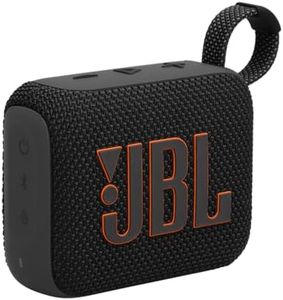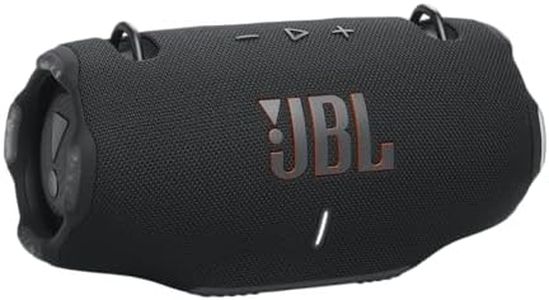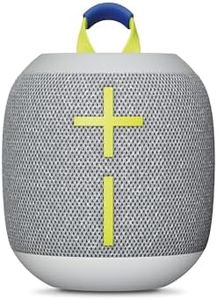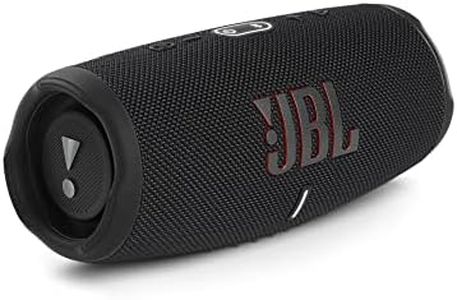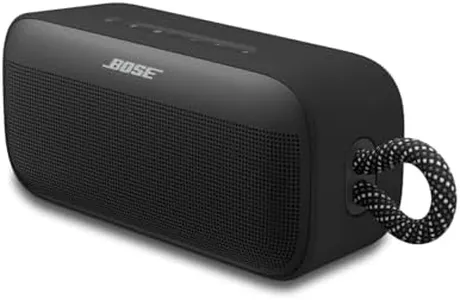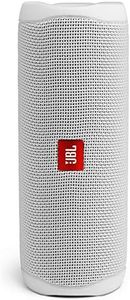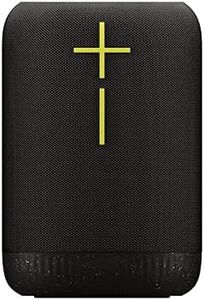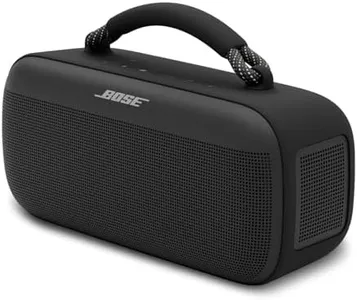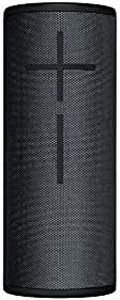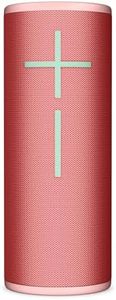We Use CookiesWe use cookies to enhance the security, performance,
functionality and for analytical and promotional activities. By continuing to browse this site you
are agreeing to our privacy policy
10 Best Waterproof Bluetooth Speakers
From leading brands and best sellers available on the web.Buying Guide for the Best Waterproof Bluetooth Speakers
When looking for the ideal waterproof Bluetooth speaker, your goal is to find a device that fits how and where you plan to use it. These speakers are great for outdoor activities, poolside fun, beach trips, camping, showers, or just using around the house without concern for spills or splashes. The key is to focus on the features that matter most to your lifestyle—how rugged it is, how it sounds, how long it lasts on a single charge, and how easy it is to carry around or connect to your devices.Waterproof Rating (IPX Rating)The waterproof rating tells you how well the speaker is protected against water and dust. This is usually shown by the IP (Ingress Protection) code, like IPX4, IPX7, or IP67. The higher the number, the better the protection. For example, IPX4 is splash-resistant, IPX7 can be submerged in shallow water for a short time, and IP67 means it's both dustproof and can handle deeper and longer submersion. If you just want to use the speaker in the bathroom or kitchen, lower ratings might be enough. But for the beach, pool, or rugged adventures, go for the highest rating you can, to ensure the speaker survives unexpected splashes or dunks.
Battery LifeBattery life tells you how long the speaker can play music before it needs to be recharged. Lightweight speakers might offer 5-8 hours, which is suitable for short outings or daily use, while larger models can last 12-24 hours or even more—ideal for long hikes, travel, or parties. If you plan to use your speaker for day-long events without easy access to power, aim for longer battery life; for casual, short-term use, shorter battery times may be just fine.
Sound Quality (Wattage/Drivers/Bass)Sound quality is about how good the speaker actually sounds when playing your music. Some specs to look at are wattage (higher means potentially louder), number and size of drivers (more or larger often means fuller sound), and any features like bass boost. Compact, ultra-portable speakers sacrifice some audio depth for size, while larger models tend to deliver better bass and clarity. If you love deep bass or enjoy playing music at larger gatherings, prioritize bigger drivers or dedicated bass features. For background listening, a smaller speaker is usually just fine.
Portability (Size and Weight)How portable a speaker is matters if you plan to carry it around. Lighter and smaller speakers easily fit in your bag or can be clipped to a backpack, perfect for biking or travel. Larger, heavier models may be better if you mainly use them in one spot, like a backyard or campsite, where you want more sound power but don't mind a little extra bulk. Think about where and how you’ll use the speaker to decide how important size is for you.
Bluetooth Range and ConnectivityBluetooth range refers to how far you can be from the speaker while still keeping a stable connection from your phone or device. Standard range is usually 30 feet (about 10 meters), but some speakers can handle much farther if you need to roam. Also, check if the speaker supports easy pairing, multi-device connections, or built-in voice assistants if those features matter to you. Think about whether you'll be close to your speaker most of the time, or if you want the freedom to move around a large area.
Durability and Build QualityDurability is about how tough the speaker is in the face of drops, bumps, or rough handling. Look for rugged materials, rubberized exteriors, or reinforced corners. If you’re planning lots of adventures or have kids, a tough, impact-resistant design is a great pick. If the speaker will mostly stay at home or only see light use, this might be less critical for you.
Additional Features (Hands-Free Calls, Pairing, Accessories)Extra features might include the ability to use the speaker as a speakerphone for calls, pairing multiple speakers together for bigger sound, or hooks, straps, and carabiners for easy carrying. Think about your specific needs: do you want to answer calls directly through the speaker, link several together for big parties, or attach it to your bike or backpack?

